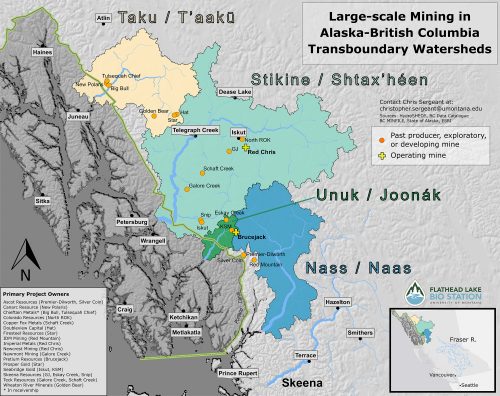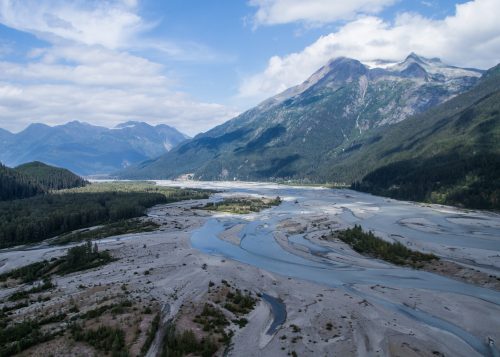International group urges review of Canadian mining impacts
April 27, 2020
Alice Bailey
907-474-5350
In a letter published in the journal Scien ce on Friday, April 24, the group highlights the shortcomings of current environmental assessment and permitting practices required of large-scale industrial mines and describes the consequences of contaminating transboundary rivers.

In Alaska, many people depend on salmon that spawn in the Taku, Stikine and Unuk rivers for personal, cultural and economic health, explained Megan McPhee, a co-author with the University of Alaska Fairbanks College of Fisheries and Ocean Sciences. All of these rivers originate in British Columbia and have multiple mines operating or proposed in their watersheds.
“Current methods for assessing and mitigating the risks to salmon posed by Canadian mining plans in transboundary rivers fall short,” she said. “The future of chinook, sockeye and coho salmon running the Taku, Stikine and Unuk rivers depends on science that is independent, rigorous and transparent.”
Chris Sergeant, a graduate student at CFOS and a co-author of the letter, calculated that mining claims cover 59% of the drainage area in the Unuk watershed. The Red Chris Mine operates in the headwaters of the Stikine River watershed, and several more industrial-scale projects are proposed. “In the Taku River watershed,” Sergeant said, “the Tulsequah Chief Mine has been leaking acid mine drainage since the 1950s.”
The letter in Science urges Canadian and U.S. governments to honor the Boundary Waters Treaty of 1909, which states that “waters flowing across the boundary shall not be polluted on either side to the injury of health and property of the other.”

The authors believe there is an opportunity to address these issues by implementing an internationally agreed-upon process for rigorous science-based review and regulation. Jonathan Moore, a co-author from Simon Fraser University in British Columbia, said, “Honoring the Boundary Waters Treaty would serve to improve the health of our shared rivers.”
When evaluating the impacts to shared waters and downstream communities, “stakeholders and decision-makers must be equals at the table,” said Erin Sexton, a researcher at the University of Montana’s Flathead Lake Biological Station and the paper’s lead author.
Sergeant said he hopes their commentary “elevates the discussion of mining in transboundary rivers and improves the science of evaluating their impacts.”
The complete text of the letter can be seen on the Science website at https://science.sciencemag.org/content/368/6489/376.2 .
CONTACTS: Megan McPhee, 907-796-5464, mvmcphee@alaska.edu; Chris Sergeant, 907-500-4540, csergeant@alaska.edu


